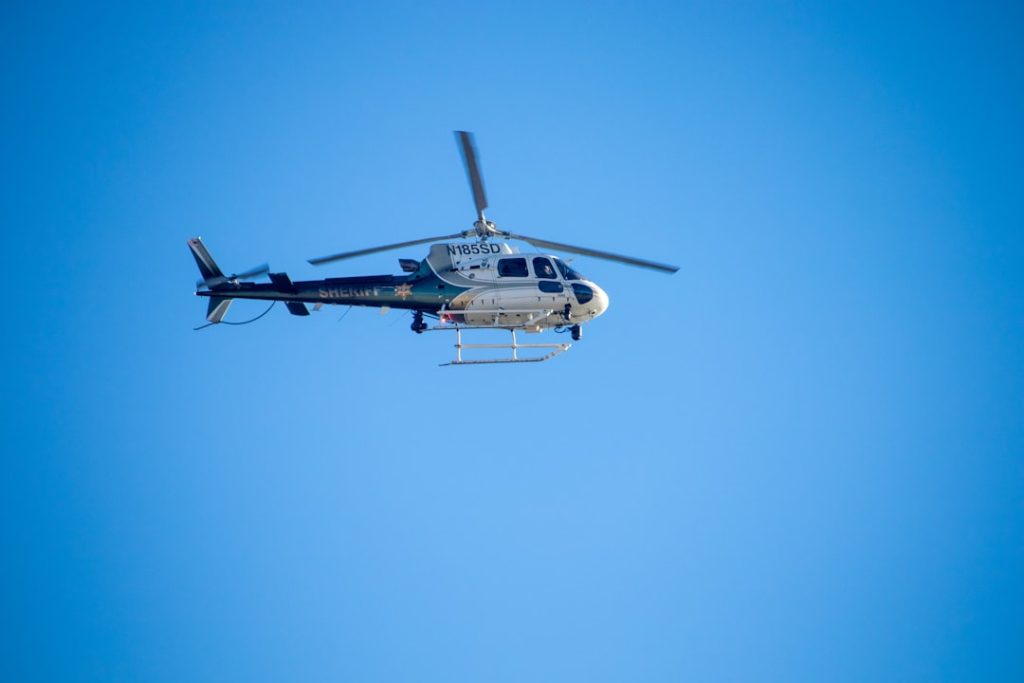Aeronautical engineering is a specialized field of engineering that focuses on the design, development, testing, and production of aircraft and spacecraft. This discipline encompasses a wide range of activities, from the initial conceptualization of an aircraft to its operational deployment in the skies. Aeronautical engineers apply principles from various branches of engineering, including mechanical, electrical, and materials engineering, to solve complex problems related to flight.
The field has evolved significantly since the Wright brothers’ first powered flight in 1903, driven by technological advancements and an increasing demand for efficient air travel. The scope of aeronautical engineering extends beyond traditional aircraft design. It includes the study of aerodynamics, propulsion systems, avionics, and structural integrity.
As global air traffic continues to rise, the need for innovative solutions to enhance safety, efficiency, and environmental sustainability becomes paramount. Aeronautical engineers are at the forefront of this evolution, leveraging cutting-edge technologies and methodologies to push the boundaries of what is possible in aviation. Their work not only impacts commercial aviation but also plays a crucial role in military applications, space exploration, and unmanned aerial vehicles (UAVs).
Key Takeaways
- Aeronautical engineering involves the design, development, and testing of aircraft and spacecraft.
- Innovative materials and manufacturing techniques are revolutionizing the aeronautical industry, leading to lighter and more efficient aircraft.
- Advancements in aerodynamics and flight dynamics are improving aircraft performance and safety.
- Electric and hybrid propulsion systems are paving the way for more sustainable and environmentally friendly aviation.
- Autonomous systems and artificial intelligence are transforming the way aircraft are operated and maintained.
Innovative Materials and Manufacturing Techniques
The aerospace industry has witnessed a remarkable transformation in materials science and manufacturing techniques over the past few decades. Traditional materials such as aluminum and steel are increasingly being supplemented or replaced by advanced composites and lightweight alloys. Carbon fiber reinforced polymers (CFRP) are particularly noteworthy for their high strength-to-weight ratio, making them ideal for aircraft structures.
These materials not only reduce the overall weight of the aircraft but also enhance fuel efficiency and performance. In addition to new materials, innovative manufacturing techniques such as additive manufacturing (3D printing) are revolutionizing the way components are produced. This technology allows for the creation of complex geometries that would be impossible or prohibitively expensive to achieve with traditional subtractive manufacturing methods.
For instance, companies like Boeing and Airbus are exploring 3D printing for producing intricate parts like brackets and housings, which can lead to significant reductions in waste and production time. Furthermore, additive manufacturing enables rapid prototyping, allowing engineers to test designs more quickly and iterate on them based on real-world performance data.
Advancements in Aerodynamics and Flight Dynamics

Aerodynamics is a critical aspect of aeronautical engineering that deals with the behavior of air as it interacts with solid objects, particularly aircraft. Recent advancements in computational fluid dynamics (CFD) have transformed how engineers analyze and optimize aerodynamic performance. By simulating airflow over various aircraft designs using sophisticated algorithms and high-performance computing resources, engineers can identify areas for improvement before physical prototypes are built.
This not only accelerates the design process but also leads to more efficient aircraft that can operate at lower fuel consumption rates. Flight dynamics, which encompasses the study of how aircraft respond to control inputs and environmental factors during flight, has also seen significant advancements. Modern aircraft are equipped with sophisticated fly-by-wire systems that utilize electronic controls instead of traditional mechanical linkages.
These systems allow for greater precision in handling and can automatically adjust control surfaces to optimize performance under varying conditions. Additionally, advancements in sensor technology have enabled real-time monitoring of flight parameters, providing pilots with critical information that enhances situational awareness and safety.
Electric and Hybrid Propulsion Systems
| Metrics | Electric Propulsion Systems | Hybrid Propulsion Systems |
|---|---|---|
| Efficiency | High | Higher than traditional systems |
| Environmental Impact | Low emissions | Reduced emissions |
| Energy Source | Electricity | Combination of fuel and electricity |
| Cost | Initial cost may be higher | Lower fuel costs |
The push for greener aviation solutions has led to significant research and development in electric and hybrid propulsion systems. These technologies aim to reduce the carbon footprint of air travel by utilizing electric motors powered by batteries or hybrid systems that combine traditional jet engines with electric propulsion. Companies like Airbus and Boeing are investing heavily in these technologies, recognizing the potential for electric aircraft to revolutionize short-haul flights.
One notable example is the Eviation Alice, an all-electric commuter aircraft designed to carry nine passengers over distances of up to 1,000 kilometers. Powered by a battery system that provides zero-emission flight capabilities, Alice represents a significant step toward sustainable aviation. Hybrid systems are also gaining traction; for instance, the Ampaire Electric EEL combines a conventional combustion engine with an electric motor to improve fuel efficiency while maintaining operational flexibility.
These innovations not only promise reduced emissions but also lower operating costs for airlines.
Autonomous Systems and Artificial Intelligence in Aviation
The integration of autonomous systems and artificial intelligence (AI) into aviation is reshaping how aircraft are operated and managed. Autonomous drones have already demonstrated their capabilities in various applications, from cargo delivery to surveillance missions. The potential for fully autonomous commercial airliners is on the horizon, with companies like Boeing and Airbus exploring pilotless flight technologies that could enhance safety and efficiency.
AI plays a crucial role in this transformation by enabling advanced decision-making capabilities in real-time. Machine learning algorithms can analyze vast amounts of data from various sources—such as weather patterns, air traffic conditions, and aircraft performance metrics—to optimize flight paths and improve fuel efficiency. Additionally, AI-driven predictive maintenance systems can monitor aircraft components for signs of wear or failure, allowing for proactive maintenance that minimizes downtime and enhances safety.
Sustainable Aviation and Green Technologies

Sustainability has become a central theme in aeronautical engineering as the industry grapples with its environmental impact. The aviation sector is responsible for a significant portion of global greenhouse gas emissions, prompting engineers to seek innovative solutions that minimize this footprint. Sustainable aviation fuels (SAFs) derived from renewable sources are one such solution gaining traction.
These fuels can significantly reduce lifecycle carbon emissions compared to traditional jet fuels. In addition to SAFs, research into hydrogen-powered aircraft is gaining momentum. Hydrogen fuel cells offer a promising alternative to conventional propulsion systems by producing only water vapor as a byproduct.
Companies like ZeroAvia are actively developing hydrogen-powered aircraft prototypes that could pave the way for zero-emission flights in the near future. Furthermore, initiatives aimed at improving air traffic management through more efficient routing and reduced congestion are also critical components of sustainable aviation strategies.
Next-Generation Aircraft Design and Construction
The design and construction of next-generation aircraft are characterized by a holistic approach that integrates advanced technologies across all phases of development. Concepts such as the blended wing body (BWB) design challenge traditional aircraft configurations by merging the wings and fuselage into a single aerodynamic structure. This design not only improves aerodynamic efficiency but also maximizes internal space for passengers or cargo.
Moreover, digital twin technology is revolutionizing how aircraft are designed and maintained. A digital twin is a virtual representation of an aircraft that simulates its performance throughout its lifecycle. Engineers can use this technology to predict how an aircraft will behave under various conditions, allowing for more informed design decisions and proactive maintenance strategies.
This approach enhances collaboration among teams by providing a shared platform for testing ideas and analyzing outcomes before physical implementation.
Future Challenges and Opportunities in Aeronautical Engineering
As aeronautical engineering continues to evolve, it faces several challenges that must be addressed to ensure sustainable growth in the industry. One significant challenge is the need for regulatory frameworks that keep pace with technological advancements. As new propulsion systems, autonomous technologies, and materials emerge, regulatory bodies must adapt their guidelines to ensure safety without stifling innovation.
Another challenge lies in workforce development; as the industry embraces new technologies such as AI and automation, there is a growing need for engineers who possess skills in these areas. Educational institutions must evolve their curricula to prepare students for the future demands of aeronautical engineering while fostering interdisciplinary collaboration among fields such as computer science, environmental science, and engineering. Despite these challenges, opportunities abound within aeronautical engineering.
The increasing focus on sustainability presents avenues for innovation in green technologies and alternative fuels. Additionally, advancements in AI and machine learning offer potential breakthroughs in operational efficiency and safety enhancements. As global air travel continues to expand, aeronautical engineers will play a pivotal role in shaping the future of aviation through their expertise and creativity in addressing these pressing challenges while seizing new opportunities for growth and advancement in the field.


